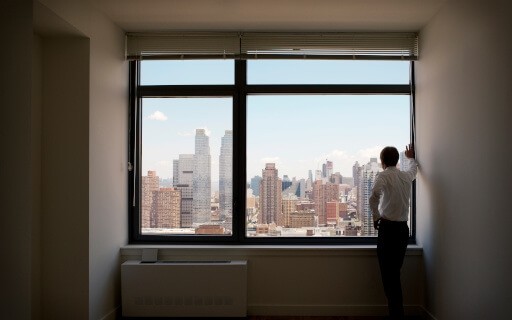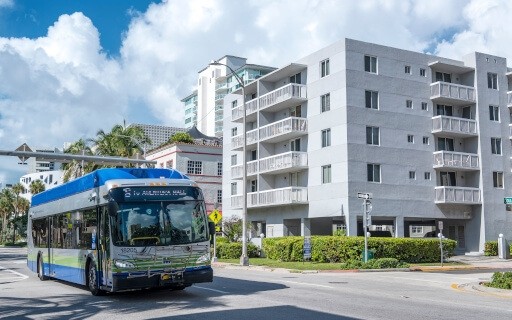
As a landlord, expecting tenants to stick around forever is wishful thinking. Though some occupants might renew for consecutive years, it's common to experience occasional property vacancies at some point during your rental journey.
Though they might seem like a landlord’s worst nightmare, rental property vacancies can sometimes be a blessing in disguise. With tenants out of your space, you get the opportunity to make necessary repairs and upgrades, attract new tenants, and even increase rent if the market allows. However, dealing with vacancies can also be a stressful and costly experience if not handled properly.
To make the most of a vacancy, check our guide on how to deal with rental property vacancies, where we answer the following questions:
- What are the impacts of rental property vacancies?
- How do landlords handle property vacancies?
- How do landlords fill vacancies quickly?
- How do landlords prevent property vacancies?
What Are the Impacts of Rental Property Vacancies?
If you have yet to experience a property vacancy, you might wonder what the big deal is. After all, vacancies are temporary and surely aren’t a threat to your rental business, right? Well, not quite.
Rental property vacancies come with significant drawbacks, especially when it comes to your bottom line. Here are some ways vacancies can affect you financially and operationally:
Lost income
Lost income is a primary concern for landlords dealing with vacancies. Without an active tenant, you will not generate any rental income. This means you’ll be responsible for paying mortgage costs, property taxes, and maintenance fees all on your own. These expenses will be your responsibility until you find a new tenant and fill your vacancy.
Security issues
Security issues are another significant risk of vacancies. Vacant homes are highly susceptible to break-ins, vandalism, and other unwanted criminal activities. This risk worsens when you leave your home unmonitored for long periods, as this allows squatters to trespass and occupy your property illegally.
To mitigate these risks, landlords should consider hiring a security service, installing alarm systems, or having a reliable neighbor or friend regularly check the property. Maintaining the exterior—like mowing the lawn and collecting mail—can also give the appearance that the home is occupied, deterring potential intruders.
Administrative costs
When it comes to vacancies, the financial hits don’t stop at your rental income. Vacancies entail several other administrative costs, including advertising expenses, screening fees, and turnover costs. While these may seem like minor expenses at first, they can add up quickly and significantly impact your bottom line.
How Do Landlords Handle Property Vacancies?
Handling vacancies is a lot easier when you’re prepared. If your tenant is nearing the end of their lease, this is the time to start prepping for a potential vacancy. However, there’s always the chance that a tenant breaks their lease early, leaving your rental unoccupied unexpectedly. Handling a vacancy will look the same in either case, and it will involve the following:
Off-season property maintenance
Vacancy periods are an opportune time to tackle property maintenance. Without having to worry about disrupting tenants, you can make extensive repairs and renovations as you please. Not only will this increase your rental’s longevity, but it may also allow you to increase rent for your next tenant. Some repairs or renovations to consider include:
- Repair items on the move-out checklist.
- Update outdated features (cabinets, countertops, toilets, flooring, tiles, light fixtures).
- Inspect HVAC and change air filters.
- Check for leaks and water damage.
- Clear drain clogs and assess water pressure.
- Have plumbing professionally inspected.
- Ensure appliances are functional; repair or replace as needed and consider donating or recycling.
- Replace damaged windows and screens.
- Adjust hardware (doorknobs, towel bars, etc.).
- Change batteries in detectors and replace burnt-out lightbulbs.
- Wipe down walls before painting and then paint.
Regular rental inspections
As mentioned earlier, safety issues are a huge risk surrounding property vacancies. The best way to mitigate this risk is to conduct regular rental inspections. Just as you would when your unit is occupied, visit your rental periodically to check for damage, unreported maintenance issues, and signs of illegal activity like break-ins or vandalism. Doing so will ensure your and your property’s safety until it is occupied again.
Proactive financial planning
In some ways, a vacancy serves as a financial wake-up call. With no rental income and additional turnover costs to account for, you’ll have to re-evaluate your finances and plan accordingly. Your first step should be to calculate your total loss of income by using the equation below:
Vacancy loss = Monthly Rate x Number of Months Vacant
Once you determine your vacancy loss, you’ll have to estimate additional administrative costs, particularly those related to tenant turnover. These will likely include repair fees, advertising expenses, and potential property management fees. Once you have an estimate of your financial loss, you can do some proactive financial planning for your next tenant. This may involve adjusting rental prices, revising your lease agreement, or finding ways to reduce expenses.
How to Fill Rental Vacancies Quickly
Time is of the essence when it comes to vacancies. The longer your rental is unoccupied, the worse your financial loss. So, you’ll want to do everything possible to fill your vacancy quickly. Whether that be increasing your listing’s exposure or offering rent concessions to new tenants, here are a few ways to fill rental vacancies quickly:
Assess your rental rates
Frequently, tenants choose not to renew their lease because of price. If this was why your previous renter left, consider adjusting your rental rate to attract new tenants. The best rule of thumb is to research market conditions using rental comps. This will involve analyzing the rental prices of similar properties in your area. If you discover that your rental is reasonably priced, it might just be a matter of making small adjustments to your lease, like offering pet-friendly policies or including utilities.
List your property in the right place
How you advertise your rental property can really make a difference in how quickly it gets leased. Rather than relying on word of mouth, you’ll want to find ways to reach a broader audience. This is typically done best by listing your property on popular rental websites and social media platforms, as this will maximize your listing’s exposure and increase your applicant pool’s size and quality.
One of your best options for maximizing your listing’s exposure is to list with Apartments.com. As one of the leading performers in the industry, we can connect you to a vast audience of prospective tenants, making it easier to fill your vacancy quickly. When you list with us, expect a smooth process with useful tools and resources to help you find the right tenant for your property.
Simplify the application process
A lengthy and overcomplicated application process can really deter renters. If you want any chance at filling a vacancy, make sure your application is as simple and straightforward as possible. Avoid asking for unnecessary information, and be sure to use digital platforms to collect applications. Doing so can expedite the application process and make it easier for all parties involved.
Apartments.com simplifies the process of receiving and reviewing rental applications. With our platform, you can effortlessly collect applications and screen tenants digitally. Our comprehensive tenant screening reports cover all the essentials, including background checks, credit assessments, and rental history. This ensures you have all the information necessary to make informed decisions about your applicants!
How to Prevent Property Vacancies
If you have a history of property vacancies, it might be time to rethink your landlord practices. Maybe you’ve lost residents from delayed maintenance requests or overpriced rent. Or perhaps your rental is outdated and no longer appealing to the right demographic. Whatever the issue may be, here are a few things you can do to prevent rental property vacancies in the future:
Know what renters are searching for
Staying on top of rental trends is a simple way to prevent property vacancies. By knowing what features, amenities, and services renters want, you can tweak your rental and ensure it meets their needs. For example, if you live in an area popular among young professionals, you might consider adding a work-from-home office space or offering community events to attract and retain this demographic. Or, if you’re in a very active, pet-friendly community, you could add pet-related amenities like dog washing stations and parks. The key here is to know your audience and their needs to retain renters long-term.
Enhance your curb appeal
Curb appeal will help your rental stand out amongst other listings. If you’re in an oversaturated market, having an appealing exterior can really grab a renter’s attention and encourage them to apply. Before listing your rental, consider tidying up landscaping, pressure washing or painting the exterior, and updating exterior fixtures like lights and house numbers. These small changes will make a big difference in enhancing your curb appeal and drawing in prospective tenants.
Build strong relationships with renters
Building trust with renters is key to increasing tenant retention and avoiding vacancies. While you don’t necessarily have to be best friends, forming a positive and lasting relationship with your residents will encourage them to stick around longer. Some ways you can build connections with your residents include being proactive about property maintenance, offering incentives for lease renewals and treating them with respect, honesty, and professionalism.
Price your rental competitively
Price can significantly sway a renter’s decision to renew or forgo their lease. If you decide to raise the rent out of your current resident’s budget, there’s a high chance they will move out at the end of their lease to find a more affordable option. Competitive pricing is your best shot at retaining tenants and avoiding vacancies. To do this, keep a pulse on market conditions, monitor rent comps, and consider finding ways to minimize expenses so that you can offer more affordable rates.
Fill Your Rental Property Vacancy with Apartments.com
Renting out a property comes with many stressors, with vacancies being one of the worst. However, knowing how to deal with rental property vacancies can minimize the negative impacts and even turn them into positive opportunities. Whether you’re looking to fill your current vacancy or want to be prepared for future ones, Apartments.com is here to help.
Apartments.com’s comprehensive suite of Renter Tools makes it easy to fill a vacancy quickly. From listing your property on our platform to managing applications and screening tenants, we have everything you need to make the rental process smooth and stress-free. So why wait? List with us today and find your next tenant in no time!
FAQs
How long can a rental property be vacant?
The duration of a rental property vacancy varies depending on market conditions, location, and property type. Generally, landlords should aim to minimize vacancy periods to avoid loss of income, ideally keeping it under 30 days.
What is a good property vacancy rate?
A good property vacancy rate typically falls between 5% to 10% of the total rental units in a given area. This range indicates a healthy rental market, meaning demand is strong enough to keep vacancies low while allowing for some turnover.
What should I do if my property remains vacant for an extended period?
If your property is vacant for an extended period, consider reassessing your rental price and marketing strategies to attract potential tenants. Additionally, enhancing the property's curb appeal or making minor renovations can also help make it more appealing in a competitive market.











